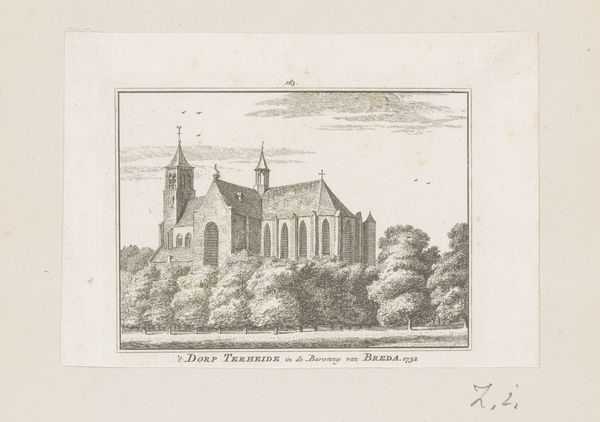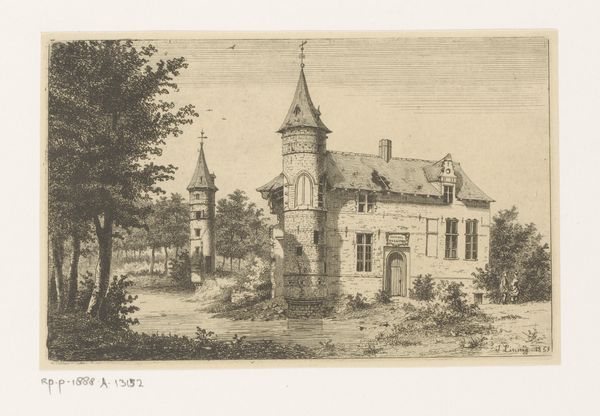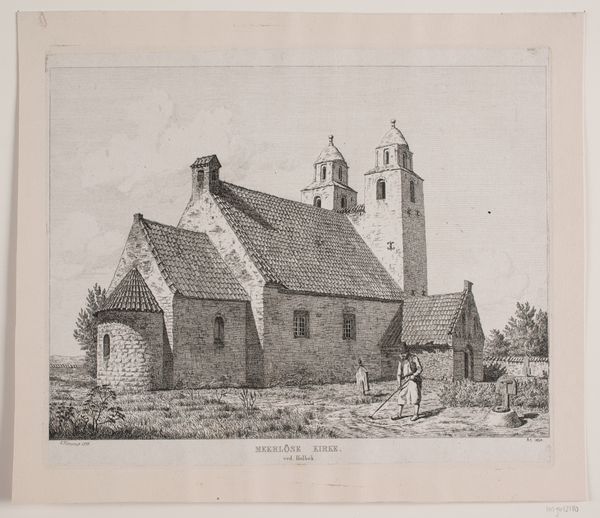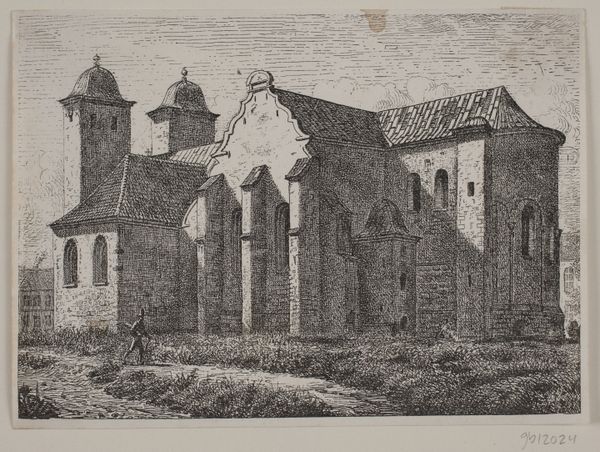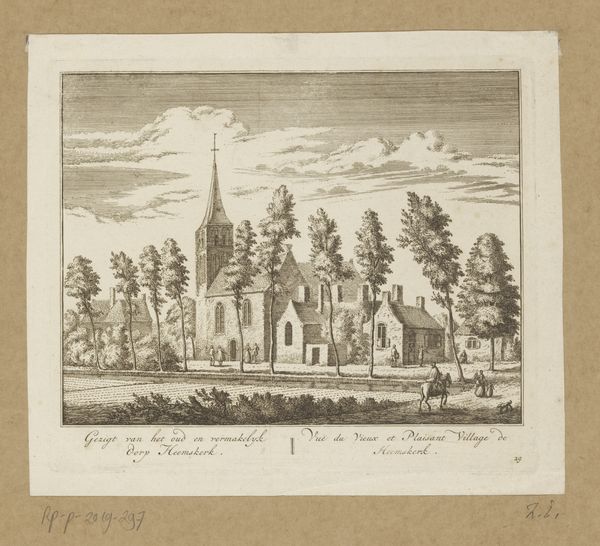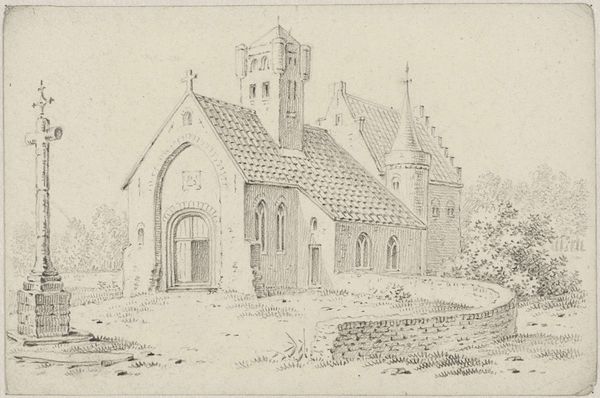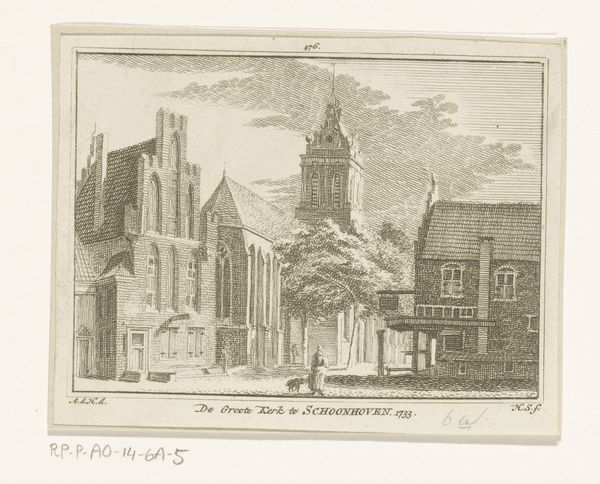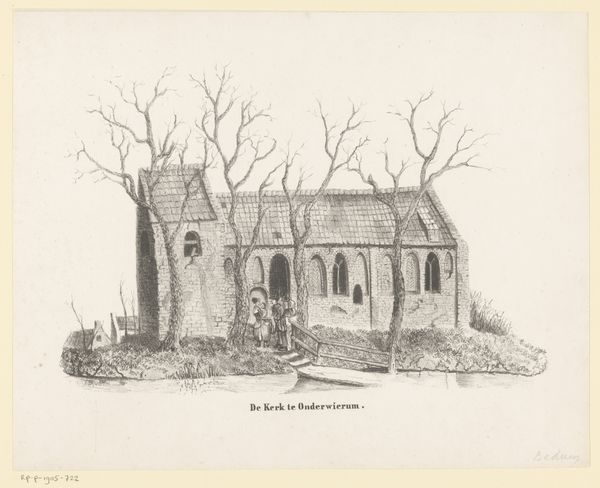
print, etching, engraving, architecture
# print
#
etching
#
landscape
#
engraving
#
architecture
Dimensions: 126 mm (height) x 190 mm (width) (Plademål)
Julius Magnus-Petersen made this print of Gumlöse Church in Skåne using etching, a printmaking technique dependent on acid. The process begins by coating a metal plate with a waxy, protective layer. The artist then scratches an image into the wax, exposing the metal beneath. When acid is applied, it bites into these exposed lines, creating grooves. Ink is then applied to the plate, filling these grooves. Finally, the plate is pressed onto paper, transferring the image. Here, Magnus-Petersen uses line etching, which is particularly well-suited to architectural subjects. Notice how the etched lines define the church’s brickwork and the details of its structure. The technique allowed for a high level of detail, which suited the cultural interests of the time – an era in which architecture came to be seen as a reflection of national identity. This print demonstrates the way the etching process makes possible the cheap, widespread distribution of architectural images, fueling the rise of nationalist sentiment and the celebration of a shared cultural heritage.
Comments
No comments
Be the first to comment and join the conversation on the ultimate creative platform.

